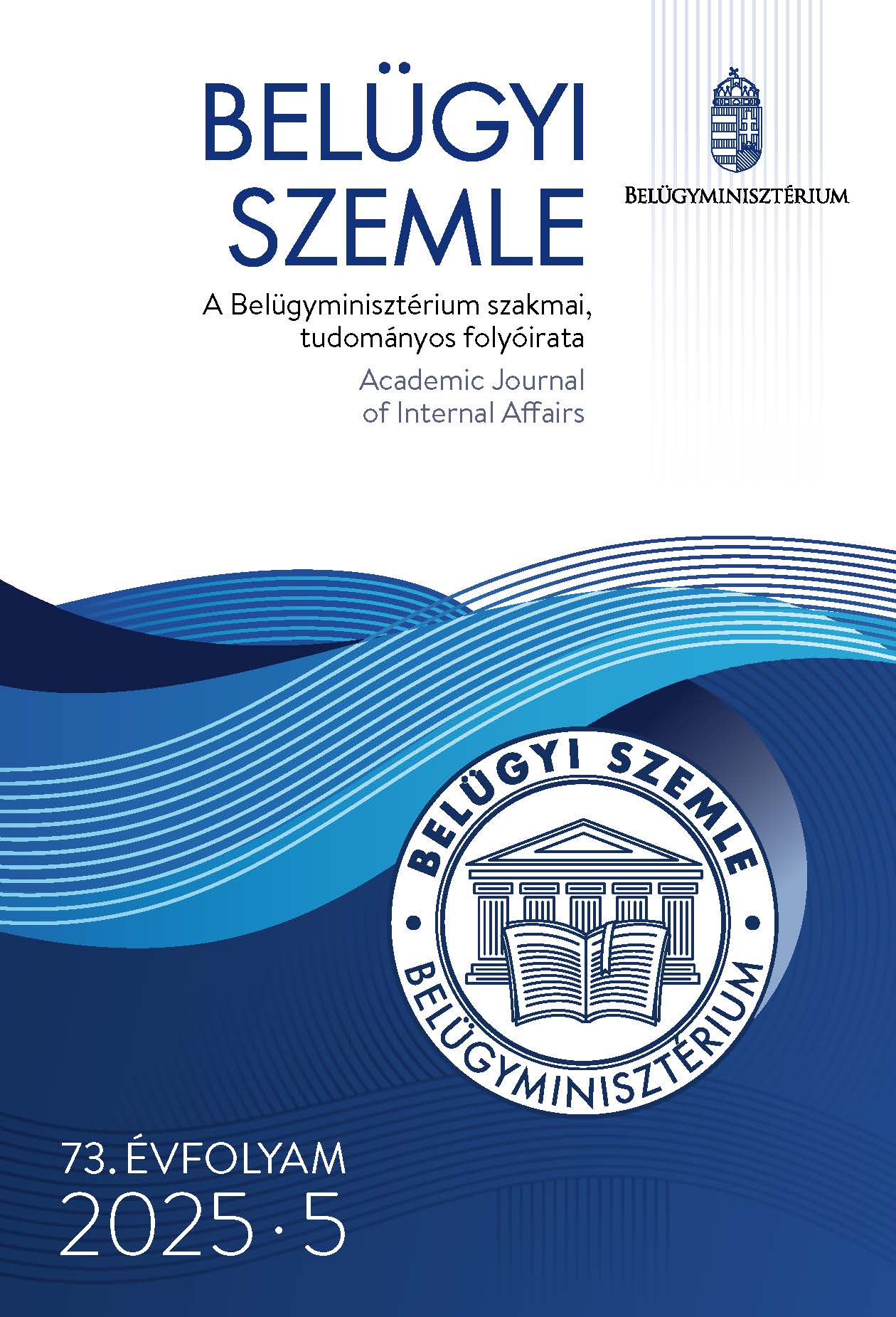Abstract
Aim: To demonstrate the development and use of surveillance systems in the field of prevention through a community policing approach, in line with the role of law enforcement actors.
Methodology: the authors of the study, as practitioners, examine the role of CCTV in prevention and in the policing tasks of municipalities and analyse the potential for improvement through early experiences and good practices.
Conclusions: The authors provide insights into the complex system of prevention through the role and framework of the camera in prevention. As part of community policing, the physical security system has gone beyond its material framework and has become a prominent element of municipal policing.
Value: the authors aim to guide the development of physical surveillance systems, through scientific research into their impact and exploration of how synergies can be exploited, recognizing their impact on prevention and public safety.
References
Abranson, A. (2007). The history of television, 1942 to 2000. McFarland. https://www.google.hu/books/edition/The_History_of_Television_1942_to_2000/TOMOmmrvwCcC?hl=hu&gbpv=1
Burows, Q. (1997). Scowl because you're on candid camera: Privacy and video surveillance. Valparaiso University Law Review, 31(3), 1103.
Christián L. (2011). A rendészet alapvonalai, önkormányzati rendőrség. Széchenyi István Egyetem, Universitas-Győr Nonprofit Kft. https://real.mtak.hu/117135/1/CL_Arendeszetalapvonalai.pdf
Christián L. (2013). Finn és magyar rendészeti modellkísérletek. In B. Gerencsér (Szerk.), Modellkísérletek a közigazgatás fejlesztésében: Az ún. „pilot projektek” határai elméletben és gyakorlatban (pp. 89–109). Pázmány Péter Katolikus Egyetem Jog- és Államtudományi Kar; Pázmány Press. https://real.mtak.hu/117133/
Finszter, G. (2009). Közbiztonság és jogállam. Jog – Állam – Politika, 1(3), 33–53. https://dfk-online.sze.hu/images/J%C3%81P/2009/3/Finszter.pdf
Finszter G. (2014). Rendészetelmélet. Nemzeti Közszolgálati Egyetem Rendészettudományi Kar.
Gazdag F., & Remek É. (2018). A biztonsági tanulmányok alapjai. Dialóg Campus Kiadó.
Gergely A. (2008). A bűnüldözés alakulása a rendszerváltás óta. Hadtudomány, 10(1). https://www.mhtt.eu/hadtudomany/2000/1_9.html
Harwood, G. (2008). Pixel. In M. Fuller (Ed.), Software studies: A lexicon (p. 213). MIT Press. https://monoskop.org/images/a/a1/Fuller_Matthew_ed_Software_Studies_A_Lexicon.pdf
Harwood, G., & Fuller, M. (2008). Software studies: A lexicon. MIT Press. https://doi.org/10.7551/mitpress/9780262062749.001.0001
Kiss A. (2011). A közterületi térfigyelő rendszerek szabályozásának kihívásai a magyar jogalkotásban és a jogalkalmazásban. Infojog, 4, 136-143. https://infojog.hu/kiss-attila-a-kozteruleti-terfigyelo-rendszerek-szabalyozasanak-kihivasai-a-magyar-jogalkotasban-es-a-jogalkalmazasban-20114-45-136-143-o/
Lippai Zs., & Kardos P. (2022a). 1991–2021 Polgárőr Almanach: Könyvismertetés. Magyar Rendészet, 21(4), 265–268. https://doi.org/10.32577/mr.2021.4.17
Lippai Zs., & Kardos P. (2022b). Bűnmegelőzés és hazafiság: Interjú Túrós András ny. r. altábornaggyal, az Országos Polgárőr Szövetség elnökével. Magyar Rendészet, 21(4), 29–35. https://doi.org/10.32577/mr.2021.4.1
Medve J. (2014). A rendészeti bűnmegelőzés hatékony eszközei. Magyar Rendészet, 14(5), pp. 65–81. https://folyoirat.ludovika.hu/index.php/magyrend/article/view/3884/3143
Prestel, B. (1997). Police et management moderne. Revue internationale de criminologie et de police technique et scientifique, 50(2), pp. 139–144.
Som Z. (2017). CCTV-rendszerek interoperabilitás és információbiztonsági megközelítése. Magyar Rendészet, 17(2), 159-171. https://folyoirat.ludovika.hu/index.php/magyrend/article/view/1969/1254
Szabó Sóki L. (2012). Elektronikus médiatartalmak: Videó és hang. Eötvös Loránd Tudományegyetem. https://ttk.elte.hu/dstore/document/857/book.pdf
Tóth A., & Tóth L. (2014). Biztonságtechnika. Nemzeti Közszolgálati Egyetem, Rendészettudományi Kar. https://rtk.uni-nke.hu/document/rtk-uni-nke-hu/Toth-Toth_bizt-techn.pdf
Tóth L. (2022). Videómegfigyelő rendszerek hatékonyságnövelő lehetőségei a közterületi megfigyelés területén (Doktori értekezés). Óbudai Egyetem, Biztonságtudományi Doktori Iskola. https://bdi.uni-obuda.hu/wp-content/uploads/2023/06/Doktori-PhD-ertekezestervezet-Toth-Levente.pdf
Wolfers, A. (1952). "National security" as an ambiguous symbol. Political Science Quarterly, 67(4), pp. 481–502. https://doi.org/10.2307/2145138
Zsigovits L. (2018). A közbiztonságot, a közrendet és az államhatár rendjét alapvetően veszélyeztető kihívások a kibertér és virtuális tér dimenziójában. Pécsi Határőr Tudományos Közlemények, 20, pp. 103–111. http://www.pecshor.hu/periodika/XX/zsigovits.pdf

This work is licensed under a Creative Commons Attribution-NonCommercial-NoDerivatives 4.0 International License.
Copyright (c) 2025 Academic Journal of Internal Affairs

